|
Historical Fiction is a tricky beast: no other genre is expected to offer the ‘triple E’ of education, entertainment, and escapism. Lovers of historical novels will never forget the epiphany of reading THAT novel, which made them fall in love with a pen that brings the past back to life. In my case, I devoured vintage classics such as ‘I, Claudius’ or ‘Sinuhe the Egyptian’. Some authors create entirely fictional characters – think Bernard Cornwall, Patrick O’Brian, Margaret Mitchell, or Robert Harris, introducing their characters into global events. Others, such as Conn Iggulden’s ‘Genghis Khan’ trilogy, the Philippa Gregory Tudor- and War of the Roses novels, or even ‘Desiree’, the world’s second bestselling #HistFic ever, feast on the larger-than-life characters. These can be daunting examples – how can an author avoid the cold, hard re-telling of historical dates and facts as much as an unreliable, if not soppy romanticised version of events? ‘So how much fact is in this?’ people ask, sounding slightly suspicious, when hearing about my ‘Tsarina’ series. Both ‘Tsarina’ and ‘The Tsarina’s Daughter’ are the first novels ever about either, early, Romanov Empress. Given the mediatic omnipresence of Catherine the Great and the morbid fascination with the last, doomed Tsar Nicholas II, this seems unimaginable. How come, and how to set a stage rich enough for their stunning lives to act out? If my ‘Tsarina’ rose from rags to riches, morphing from serf to the first ever reigning Empress Catherine I of Russia, ‘The Tsarina’s Daughter’ Elizabeth, the only surviving sibling of Peter the Great’s fifteen children, in my new novel suffers an opposite fate: She falls from riches to rags, before rising triumphantly from rags to Romanov in one rollercoaster of a wild, seductive ride. This made writing about her a particular challenge: she acts far ahead of her time, and also daring beyond her sex. Determined to do things her own way, Elizabeth was a modern woman, even if her path was stony. Not even aged twenty, following her parents’ death, ‘Europe’s most lovely Princess’ – Louis Caravaque paints her looking like a young Marilyn Monroe, dewy-eyed and rosy-cheeked – found herself impecunious and isolated. Given the choice between a third-rate match – when neither the marriage of her sister or her numerous cousins inspired much confidence in marital relations in her – or to retreat to a nunnery, with a maimed and babbling hunchback dwarf as her sole company, Elizabeth did neither. I did research for a year before daring to write the opening sentence of ‘Tsarina’, the world’ ultimate double Cinderella story, describing the birth of a nation. A wide variety of reading bridged past and present, allowing to attempt an answer to the question: How were things REALLY like, especially for women living in a brutal, male dominated world, which offered little prospect beyond annual childbirth? I did my homework, reading everything from the classics such as Gogol, Dostoevsky, and Tolstoy – to the point where a name without patronym looks bland to me! – to letters from foreign envoys at court and travel diaries of a 17th century merchant to fairy tales – invaluable for understanding a people’s imaginary – and, last but not least, tomes such as Prof. Lindsey Hughes’ ‘Russia in the Age of Peter the Great’. The details provide a non-negotiable framework: clothes, food, furniture, travel and the aspect of cities and town. As for the historical background of ‘The Tsarina’s Daughter’, the years following Peter the Great’s death set the stage for a brutal battle for the reign in Russia, a struggle for Russia’s very survival. The throne was orphaned three times in five years - a revolving door in these most complex times in the Russian history, which is rarely straightforward. The setting of both novels was like a loom a thousand strands strong, apt to weave a tapestry grand enough to fill the walls of the Winter Palace. Yet this historic background ought never to weigh on the story, but make it float instead. The challenge equals doing a split. Like in the Olympic Games, the setting is the Rhythm Dance, the fleshing out of the character and the flow of a pacey, fresh story the Free Dance. I take liberties with the language, though: my heroines are not stuck in some weird period-drama, but are women of flesh and blood, who speak modern English. ‘Sod the caviar!’ Why ever not? Careful, though – a medieval brain cannot be ‘computing away’, as I recently read it. Take heart! During research you will find the angle to reel a reader into his world and story. In his TED talk, the literary agent Jonny Geller says: ‘Readers are looking for a journey, from a place where they have not been, to a place they know not where...’ It should be the same for an author. In the case of ‘The Tsarina’s Daughter’, this was discovering the terrible price my heroine had to pay for seizing power in Russia. Also, the rumours surrounding Elizabeth’s birthplace, Kolomenskoe Palace, were intriguing. It was said to be haunted by soothsaying, ill-willing spirits and rumoured to be a gate to time travel. How seductive to provide my heroine with a Delphic prophecy, which accompanies her life like a choker of dark pearls; guidance, and warning in one. My leading ladies were like Tut-Ankh-Amun, hiding in plain view. Finding them might have been an unbelievable stroke of luck; I prefer to think that I was destined to do so. Germans and Russians share a millennial history (My father grew up in the GDR) and ‘my girls’ lived as raw and fearless as I would like my writing to be. Despite hooped skirts, candle-light and sled-rides, both ‘Tsarina’ and ‘The Tsarina’s Daughter’ are thoroughly modern novels. My heroines breathe with their hearts, surviving wars, vicious female jealousies, and callous court intrigues of the highest order, making for a marriage of dreams of fact and fiction, and a sweeping epic cloaked in ice and snow.
'Tsarina' & 'The Tsarina's Daughter' @Bloomsbury Books Twitter: @Ealpsten_author Instagram: @ellenalpsten_author www.ellenalpsten.com
0 Comments
Leave a Reply. |
Categories
All
Archives
April 2024
|
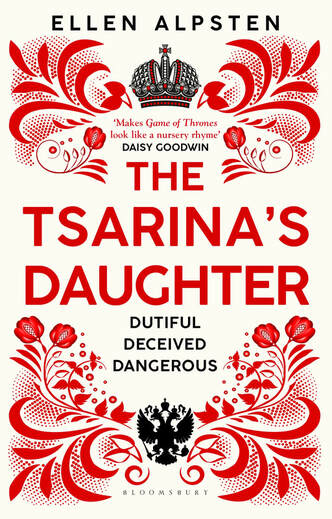
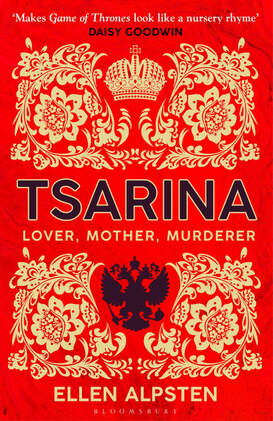
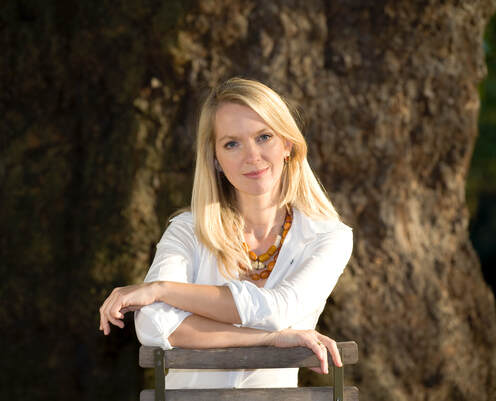
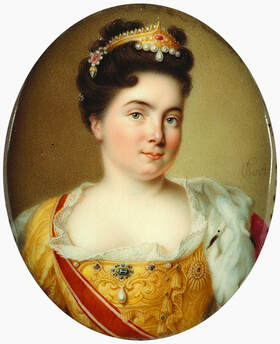
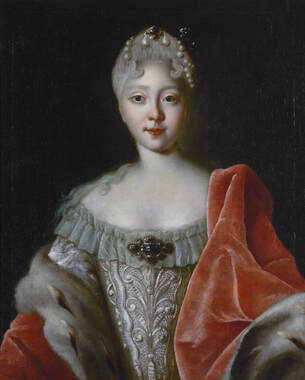
 RSS Feed
RSS Feed